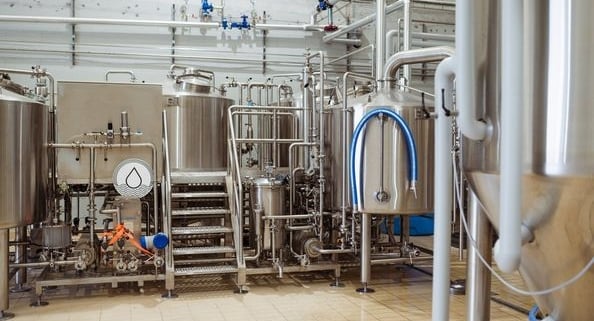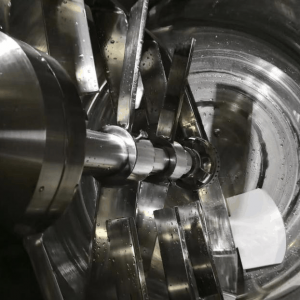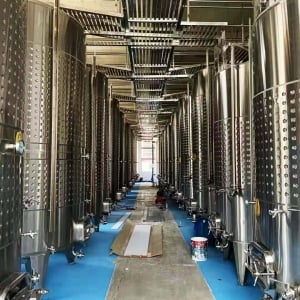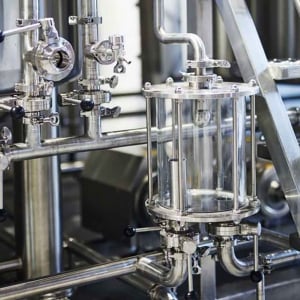Stainless Steel Beer Brewing Equipment
Overview: The Allure of Stainless Steel in Beer Brewing
The world of beer brewing has witnessed a renaissance in recent years, with both hobbyists and professionals turning to stainless steel for their equipment. Why stainless steel? This material offers a blend of durability, cleanliness, and efficiency that is hard to beat. In this comprehensive guide, we’ll delve into the various aspects of stainless steel beer brewing equipment, from types and capacities to maintenance and supplier selection.
The Ultimate Equipment Guide
Brewing beer is both an art and a science, requiring precise tools and materials. Stainless steel stands out due to its resistance to corrosion, ease of cleaning, and longevity. Here, we’ll explore the key components of a typical brewing setup.
Brewing Kettle: The heart of the brewing process, used for boiling wort. It must be robust and corrosion-resistant.
Mash Tun: This vessel is where the mashing process occurs, converting starches into fermentable sugars.
Fermenter: Once the wort is boiled and cooled, it is transferred to the fermenter where yeast is added, and fermentation takes place.
Heat Exchanger: Critical for cooling the wort quickly after boiling to a temperature suitable for fermentation.
Pump: Essential for transferring liquids between vessels efficiently and safely.
Cleaning Equipment: Proper cleaning and sanitation are crucial in brewing to prevent contamination.
Table: Types of Stainless Steel Brewing Equipment
| Equipment | Description | Key Features |
|---|---|---|
| Brewing Kettle | Used for boiling wort, must be durable and corrosion-resistant. | High thermal conductivity, easy to clean, various capacities. |
| Mash Tun | Vessel where mashing process converts starches to fermentable sugars. | Insulated design, false bottom for liquid separation, temperature control. |
| Fermenter | Where fermentation occurs after wort cooling. | Airtight, equipped with airlock, various shapes and sizes. |
| Heat Exchanger | Cools wort quickly to suitable fermentation temperature. | Efficient cooling, often made with multiple plates for increased surface area. |
| Pump | Transfers liquids between vessels. | Stainless steel casing, food-grade materials, reliable flow rate. |
| Cleaning Equipment | Ensures cleanliness to prevent contamination. | Includes brushes, CIP (Clean-In-Place) systems, sanitizers. |
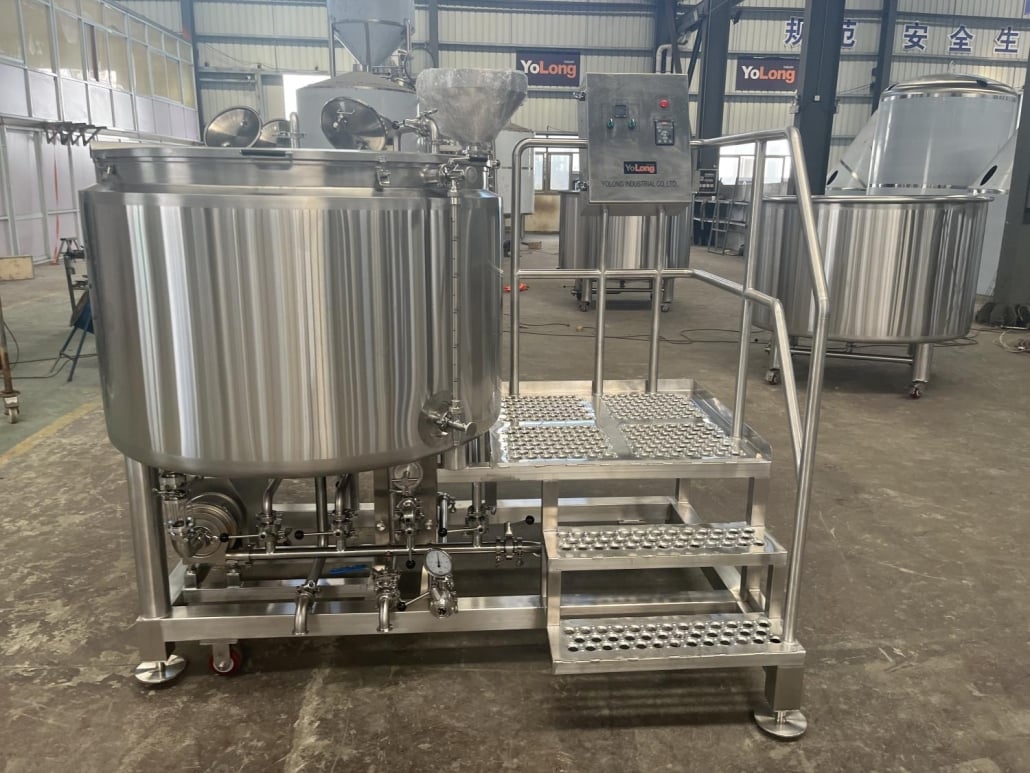
The Brewing Process Explained
Brewing beer is a meticulous process that combines precision with creativity. Here, we break down each step.
Mashing: The process begins with mashing, where crushed malted grains are soaked in hot water. This converts the starches into fermentable sugars, resulting in a sweet liquid called wort.
Boiling: The wort is then boiled and hops are added for bitterness, flavor, and aroma. Boiling also sterilizes the wort, making it safe for fermentation.
Cooling: After boiling, the wort must be quickly cooled to a temperature where yeast can survive. This is where the heat exchanger comes into play.
Fermentation: Cooled wort is transferred to the fermenter, and yeast is added. Over the next few days to weeks, yeast converts the sugars into alcohol and carbon dioxide.
Conditioning: After fermentation, the beer is conditioned, either in bottles, cans, or kegs. This allows flavors to mature and unwanted compounds to settle.
Packaging: The final step involves packaging the beer for consumption. Proper sanitation is crucial at this stage to prevent spoilage.
Brewing Equipment: Capacities, Spaces, and Customization
Choosing the right equipment involves considering various factors, such as capacity, available space, and customization options. Here’s a detailed look at these aspects.
Table: Capacity, Space, Design, and Customization
| Aspect | Details |
|---|---|
| Capacity | Equipment capacity varies from small homebrewing kits (5-10 gallons) to large commercial systems (1000+ gallons). |
| Space | Home setups can fit in a kitchen or garage, while commercial systems require dedicated brewing facilities with ample space for equipment and storage. |
| Design | Ergonomics and workflow efficiency are critical. Equipment should be arranged to minimize movement and streamline the brewing process. |
| Customization | Many suppliers offer customizable options, including additional ports, built-in thermometers, and personalized branding. |
Understanding the Price Range
The cost of stainless steel brewing equipment can vary widely based on factors like size, complexity, and brand. Here’s a guide to help you navigate the price ranges.
Table: Suppliers and Price Range
| Supplier | Equipment Range | Price Range |
|---|---|---|
| Homebrew Heaven | Homebrewing kits and small-scale equipment | $200 – $1,500 |
| ProBrew | Professional brewing systems | $10,000 – $200,000+ |
| BrewTech | Customizable options for home and microbreweries | $1,000 – $50,000 |
| SS Brewtech | Fermenters and kettles | $300 – $5,000 |
Installation, Operation, and Maintenance
Proper installation, operation, and maintenance are crucial for ensuring the longevity and efficiency of brewing equipment.
Table: Installation, Operation, and Maintenance
| Aspect | Details |
|---|---|
| Installation | Professional installation recommended for large systems. Ensure all connections are secure and equipment is level. |
| Operation | Follow manufacturer guidelines. Regularly monitor temperature, pressure, and cleanliness. |
| Maintenance | Clean equipment thoroughly after each use. Periodic deep cleaning and descaling are necessary. Check for wear and replace parts as needed. |
Choosing the Right Supplier
Selecting the right supplier can significantly impact the quality and reliability of your brewing equipment. Here are some factors to consider.
Table: How to Choose a Supplier
| Consideration | Details |
|---|---|
| Reputation | Look for suppliers with strong industry reputations and positive customer reviews. |
| Customer Support | Ensure the supplier offers robust customer support, including installation assistance and troubleshooting. |
| Customization Options | Evaluate if the supplier can provide equipment tailored to your specific needs, including custom sizes and additional features. |
| Warranty and Service | Check for warranties and availability of replacement parts and services. |
Pros and Cons: Stainless Steel Beer Brewing Equipment
Understanding the advantages and limitations of stainless steel equipment can help you make an informed decision.
Table: Advantages and Limitations
| Aspect | Advantages | Limitations |
|---|---|---|
| Durability | Extremely durable and long-lasting, resistant to rust and corrosion. | Generally more expensive than other materials. |
| Cleanliness | Easy to clean and sanitize, reducing the risk of contamination. | Requires thorough cleaning to prevent buildup and maintain quality. |
| Heat Conductivity | Excellent heat conductivity, ensuring even heating and efficient brewing. | Can be heavy and cumbersome to move, especially in larger setups. |
| Aesthetic Appeal | Sleek, professional appearance that enhances any brewing setup. | Scratches and dents can affect the aesthetic over time. |
| Customizability | Highly customizable with various options for ports, fittings, and accessories. | Custom options can add to the cost. |

FAQ
To wrap things up, here are some common questions about stainless steel beer brewing equipment, answered in a concise, easy-to-digest format.
| Question | Answer |
|---|---|
| Why choose stainless steel over other materials for brewing equipment? | Stainless steel offers superior durability, cleanliness, and heat conductivity compared to materials like aluminum or plastic. |
| Is stainless steel equipment suitable for homebrewers? | Yes, there are many options available for both beginners and advanced homebrewers. It’s a worthwhile investment for quality and longevity. |
| How do I maintain stainless steel brewing equipment? | Regular cleaning and sanitation are key. After each use, clean thoroughly with appropriate cleaners, and periodically perform deep cleaning and descaling. |
| Can stainless steel equipment be customized? | Absolutely. Many suppliers offer customization options, from additional ports and fittings to specific sizes and branded elements. |
| What is the average cost of setting up a homebrewing system with stainless steel equipment? | Costs can range from $500 for basic setups to $5,000+ for advanced systems with more features and higher capacities. |
| What should I look for in a supplier? | Look for a reputable supplier with good customer reviews, robust support services, and customizable options. Ensure they offer warranties and reliable service plans. |
Conclusion
Stainless steel beer brewing equipment represents the pinnacle of brewing technology, offering unmatched durability, cleanliness, and efficiency. Whether you’re a homebrewer or running a commercial operation, investing in stainless steel can significantly enhance your brewing experience. By understanding the different types of equipment, the brewing process, and how to maintain your gear, you’ll be well on your way to crafting exceptional beers.
Choosing the right supplier and equipment tailored to your needs is crucial. Remember to consider factors such as capacity, customization options, and price ranges. By following the guidelines provided, you can make informed decisions that will ensure your brewing setup is both effective and enjoyable.

